-
 Bitcoin
Bitcoin $105,734.0170
-1.51% -
 Ethereum
Ethereum $2,414.7328
-3.26% -
 Tether USDt
Tether USDt $1.0002
0.00% -
 XRP
XRP $2.1748
-2.62% -
 BNB
BNB $647.5663
-1.72% -
 Solana
Solana $148.1710
-3.81% -
 USDC
USDC $0.9999
-0.01% -
 TRON
TRON $0.2799
-0.02% -
 Dogecoin
Dogecoin $0.1586
-4.17% -
 Cardano
Cardano $0.5440
-5.03% -
 Hyperliquid
Hyperliquid $37.0680
-6.59% -
 Bitcoin Cash
Bitcoin Cash $501.2052
-4.01% -
 Sui
Sui $2.6846
-3.47% -
 Chainlink
Chainlink $12.8488
-3.38% -
 UNUS SED LEO
UNUS SED LEO $8.9480
-1.51% -
 Avalanche
Avalanche $17.2059
-3.87% -
 Stellar
Stellar $0.2270
-4.75% -
 Toncoin
Toncoin $2.7889
-3.93% -
 Shiba Inu
Shiba Inu $0.0...01126
-1.76% -
 Litecoin
Litecoin $83.6893
-3.36% -
 Hedera
Hedera $0.1445
-4.49% -
 Monero
Monero $312.4014
-2.58% -
 Dai
Dai $1.0000
0.00% -
 Ethena USDe
Ethena USDe $1.0001
-0.01% -
 Polkadot
Polkadot $3.2920
-3.32% -
 Bitget Token
Bitget Token $4.4629
-1.81% -
 Uniswap
Uniswap $6.5386
-8.42% -
 Aave
Aave $260.3780
-6.01% -
 Pepe
Pepe $0.0...09308
-4.54% -
 Pi
Pi $0.4864
-3.04%
How to set up a crypto wallet?
A crypto wallet securely manages your digital assets by storing private and public keys, enabling transactions on the blockchain.
Jul 02, 2025 at 02:42 am
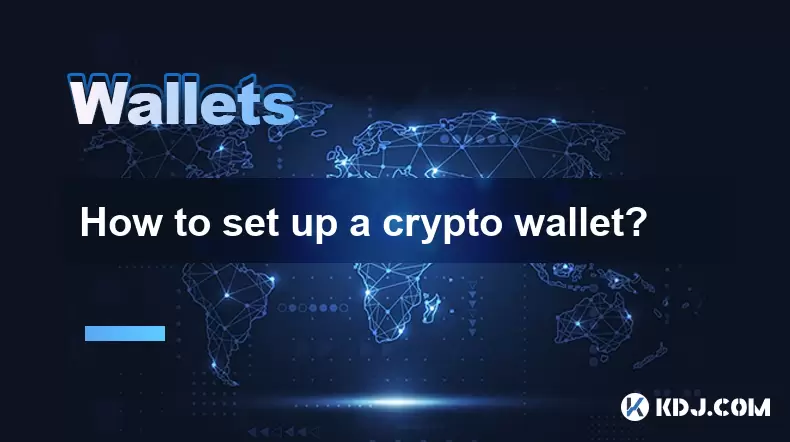
What is a Crypto Wallet and Why Do You Need One?
A crypto wallet is a digital tool that allows users to store, send, and receive cryptocurrencies securely. Unlike traditional wallets that hold physical money, crypto wallets do not actually store coins; instead, they manage the private and public keys associated with your cryptocurrency holdings. These keys are essential for accessing and authorizing transactions on the blockchain. Without a wallet, you cannot interact with decentralized networks or control your digital assets.
There are several types of crypto wallets, including software wallets (desktop, mobile, online), hardware wallets, and paper wallets. Each has its own security level and convenience factor. Choosing the right type depends on how frequently you plan to use your crypto and how much you're willing to invest in security.
Types of Crypto Wallets: Which One Is Right for You?
Understanding the different types of crypto wallets is crucial before setting one up. Software wallets are applications installed on your computer or smartphone. They offer ease of access and are suitable for daily transactions. Examples include Trust Wallet and Electrum.
Hardware wallets, such as Ledger or Trezor, are physical devices that store your private keys offline. These are considered the most secure option, especially for long-term storage of large amounts of cryptocurrency.
Paper wallets involve printing your public and private keys on paper and storing them securely. While this method is offline and theoretically safe from hacking, it's also prone to physical damage and loss.
Selecting the appropriate wallet depends on your usage patterns, technical expertise, and risk tolerance. Beginners often start with mobile or desktop wallets due to their user-friendly interfaces.
Step-by-Step Guide to Setting Up a Software Wallet
Setting up a software wallet involves several key steps that must be followed carefully to ensure security. Begin by researching and selecting a reputable wallet provider. Look for open-source wallets with positive community reviews and strong security features.
Download the wallet application directly from the official website to avoid counterfeit versions. Once installed, launch the application and choose the option to create a new wallet. You will be prompted to set a strong password — make sure it contains a mix of uppercase, lowercase, numbers, and symbols.
Next, the wallet will generate a recovery phrase (usually 12 or 24 words). This phrase is critical because it acts as a backup to restore your wallet if you lose access. Write it down on paper and store it in a secure, offline location. Never save it digitally or share it with anyone.
After securing your recovery phrase, verify it within the app by selecting the correct words in order. Once confirmed, your wallet is ready to use. Make sure to keep your device updated and protected with antivirus software.
How to Set Up a Hardware Wallet Securely
For those prioritizing security, setting up a hardware wallet requires additional precautions. Start by purchasing a hardware wallet directly from the manufacturer’s official site to avoid tampered devices. Popular options include Ledger Nano S/X and Trezor Model T.
Before plugging in the device, ensure your computer is free of malware. Connect the wallet via USB and follow the setup instructions provided on the screen. The device will prompt you to set a PIN code — choose something memorable but not easily guessable.
You will then be shown a recovery seed phrase on the device’s screen. Write it down in the exact order and store it securely. This phrase should never be stored online or shared with anyone.
Once setup is complete, install the corresponding wallet software (like Ledger Live or Trezor Suite) and connect your hardware wallet. You can now transfer funds to your wallet address safely. Always ensure firmware updates are applied promptly to protect against vulnerabilities.
Best Practices for Managing Your Crypto Wallet
Managing a crypto wallet goes beyond just sending and receiving funds. It involves regular monitoring and adherence to best practices to maintain security. Always double-check recipient addresses before sending any cryptocurrency — a single incorrect character can result in irreversible loss.
Enable two-factor authentication (2FA) wherever possible, especially for online wallets. This adds an extra layer of protection by requiring a second verification step, typically through an authenticator app or SMS.
Regularly back up your wallet, particularly after creating new addresses or making significant transactions. Store backups in multiple secure locations to prevent data loss due to theft or hardware failure.
Avoid using public Wi-Fi when accessing your wallet, as these networks are often unsecured and vulnerable to man-in-the-middle attacks. Consider using a dedicated device for managing your crypto assets and keep it isolated from general internet browsing.
Frequently Asked Questions
What happens if I lose my recovery phrase?
If you lose your recovery phrase and don’t have a backup, you may permanently lose access to your funds. There is no centralized authority to recover lost keys, so safeguarding your recovery phrase is absolutely essential.
Can I use the same wallet for multiple cryptocurrencies?
Some wallets support multiple cryptocurrencies, while others are designed for specific coins. Check the wallet’s compatibility list before sending funds. Sending unsupported coins to a wallet may result in permanent loss.
Is it safe to store large amounts of crypto in a software wallet?
Storing large amounts of cryptocurrency in a software wallet increases exposure to potential cyber threats. For larger holdings, it’s advisable to use a hardware wallet or split funds across multiple wallet types.
How often should I update my wallet software?
Always update your wallet software as soon as updates become available. Developers frequently release patches for security vulnerabilities, and outdated software can expose your funds to risks.
Disclaimer:info@kdj.com
The information provided is not trading advice. kdj.com does not assume any responsibility for any investments made based on the information provided in this article. Cryptocurrencies are highly volatile and it is highly recommended that you invest with caution after thorough research!
If you believe that the content used on this website infringes your copyright, please contact us immediately (info@kdj.com) and we will delete it promptly.
- Crypto Trends 2025: MAGACOIN FINANCE Surges, Ethereum Mining Evolves, and XRP Payouts Innovate
- 2025-07-02 10:30:12
- Ethereum, MAGACOIN FINANCE, and Inflation: A Shift in Crypto Investor Focus
- 2025-07-02 10:30:12
- Kangaroos, Coin Purses, and a Hop Through Money History: You Gotta See This!
- 2025-07-02 10:50:15
- Arbitrum, Robinhood, and ARB Price: Is a Rebound on the Horizon?
- 2025-07-02 10:50:15
- Michael Saylor, Bitcoin, and $500 Million: A Winning Strategy?
- 2025-07-02 08:30:12
- Toncoin's Telegram Takeover: Price Predictions and the Power of Utility
- 2025-07-02 09:10:12
Related knowledge
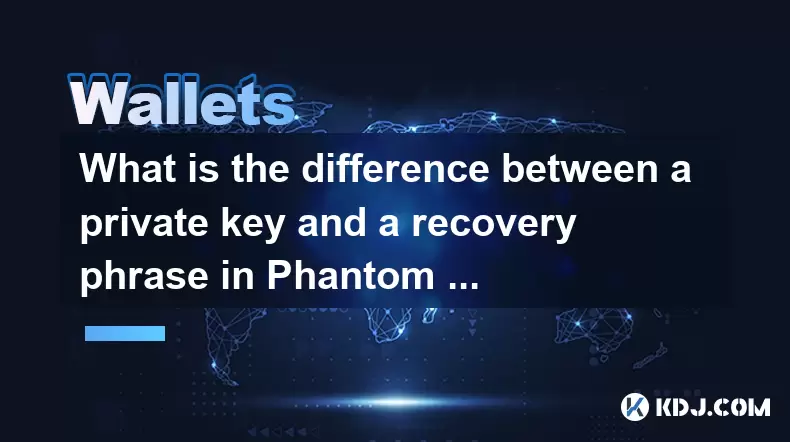
What is the difference between a private key and a recovery phrase in Phantom wallet?
Jul 02,2025 at 09:57am
Understanding the Basics of Phantom WalletPhantom wallet is a non-custodial digital wallet primarily used for interacting with the Solana blockchain. It allows users to store, send, and receive SOL tokens and other digital assets like NFTs. Non-custodial means that the user retains full control over their private keys and recovery phrases. Understanding...
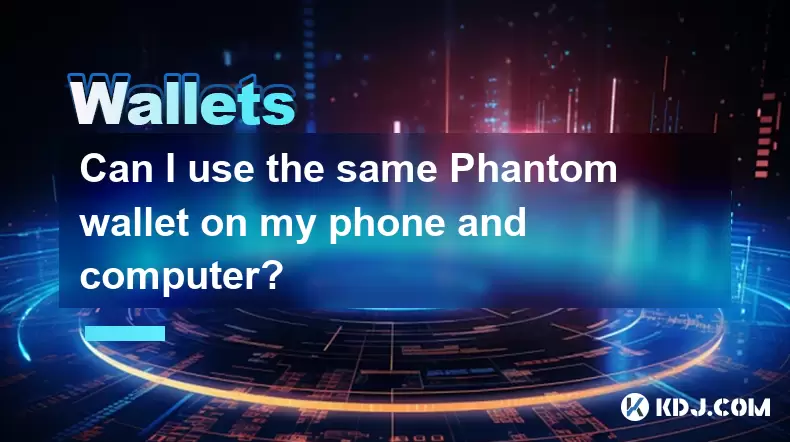
Can I use the same Phantom wallet on my phone and computer?
Jul 02,2025 at 10:04am
Phantom Wallet: Cross-Device CompatibilityPhantom wallet is a non-custodial cryptocurrency wallet designed primarily for interacting with the Solana blockchain. It supports both browser extensions and mobile applications, making it versatile for users who want to manage their digital assets across multiple devices. One of the most common questions among...
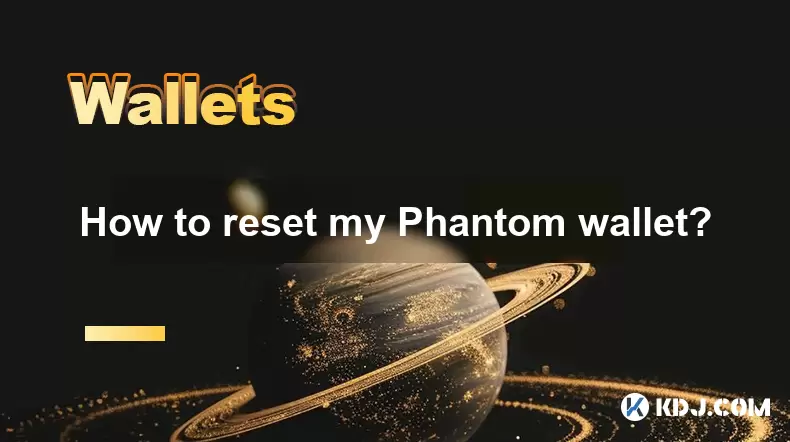
How to reset my Phantom wallet?
Jul 02,2025 at 12:36am
Understanding the Need for Resetting Your Phantom WalletIf you're using a Phantom wallet, you may encounter situations where resetting your wallet becomes necessary. This could be due to forgotten passwords, seed phrase issues, or account corruption. Phantom is a non-custodial wallet primarily used for interacting with the Solana blockchain, and it stor...
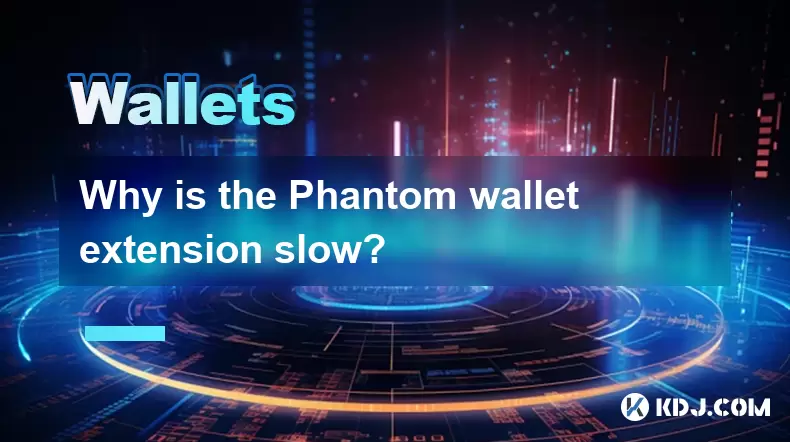
Why is the Phantom wallet extension slow?
Jul 02,2025 at 04:15am
Phantom Wallet Extension: Why Is It Slow?Phantom wallet is a widely used browser extension for interacting with decentralized applications (dApps) on the Solana blockchain. Despite its popularity, some users report that the Phantom wallet extension runs slowly at times. This article delves into potential reasons behind this performance issue and provide...
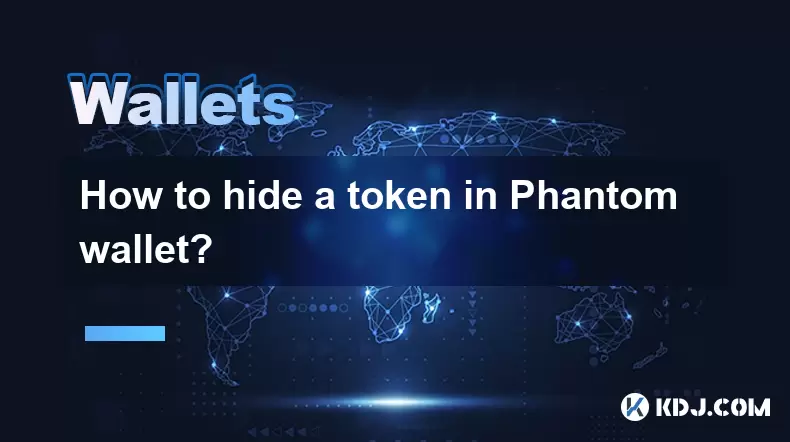
How to hide a token in Phantom wallet?
Jul 01,2025 at 05:49pm
Understanding the Phantom Wallet InterfacePhantom wallet is a popular non-custodial wallet used primarily for interacting with the Solana blockchain. It allows users to store, send, receive, and manage various tokens, including both fungible and non-fungible tokens (NFTs). Before attempting to hide a token, it's essential to understand how the wallet in...

How to unstake SOL in Phantom wallet?
Jul 02,2025 at 06:49am
What Is Staking SOL in Phantom Wallet?Staking SOL involves locking up your SOL tokens to support the Solana network and earn rewards. The Phantom wallet, a popular non-custodial wallet for Solana, allows users to stake their SOL directly from the interface. When you stake SOL, it becomes temporarily unavailable as it is delegated to a validator. This pr...

What is the difference between a private key and a recovery phrase in Phantom wallet?
Jul 02,2025 at 09:57am
Understanding the Basics of Phantom WalletPhantom wallet is a non-custodial digital wallet primarily used for interacting with the Solana blockchain. It allows users to store, send, and receive SOL tokens and other digital assets like NFTs. Non-custodial means that the user retains full control over their private keys and recovery phrases. Understanding...

Can I use the same Phantom wallet on my phone and computer?
Jul 02,2025 at 10:04am
Phantom Wallet: Cross-Device CompatibilityPhantom wallet is a non-custodial cryptocurrency wallet designed primarily for interacting with the Solana blockchain. It supports both browser extensions and mobile applications, making it versatile for users who want to manage their digital assets across multiple devices. One of the most common questions among...

How to reset my Phantom wallet?
Jul 02,2025 at 12:36am
Understanding the Need for Resetting Your Phantom WalletIf you're using a Phantom wallet, you may encounter situations where resetting your wallet becomes necessary. This could be due to forgotten passwords, seed phrase issues, or account corruption. Phantom is a non-custodial wallet primarily used for interacting with the Solana blockchain, and it stor...

Why is the Phantom wallet extension slow?
Jul 02,2025 at 04:15am
Phantom Wallet Extension: Why Is It Slow?Phantom wallet is a widely used browser extension for interacting with decentralized applications (dApps) on the Solana blockchain. Despite its popularity, some users report that the Phantom wallet extension runs slowly at times. This article delves into potential reasons behind this performance issue and provide...

How to hide a token in Phantom wallet?
Jul 01,2025 at 05:49pm
Understanding the Phantom Wallet InterfacePhantom wallet is a popular non-custodial wallet used primarily for interacting with the Solana blockchain. It allows users to store, send, receive, and manage various tokens, including both fungible and non-fungible tokens (NFTs). Before attempting to hide a token, it's essential to understand how the wallet in...

How to unstake SOL in Phantom wallet?
Jul 02,2025 at 06:49am
What Is Staking SOL in Phantom Wallet?Staking SOL involves locking up your SOL tokens to support the Solana network and earn rewards. The Phantom wallet, a popular non-custodial wallet for Solana, allows users to stake their SOL directly from the interface. When you stake SOL, it becomes temporarily unavailable as it is delegated to a validator. This pr...
See all articles

























































































